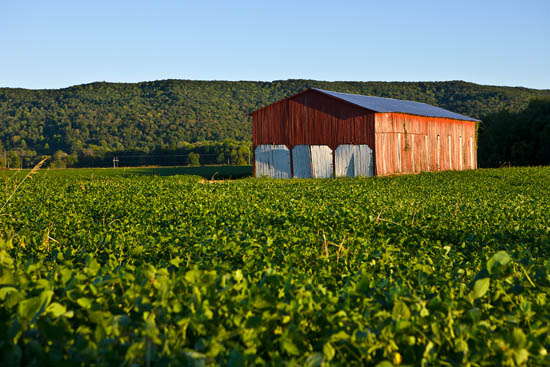UK economic study snaps agriculture’s bigger picture
UK economic study snaps agriculture’s bigger picture

A new University of Kentucky study has found agriculture’s total impact on Kentucky’s economy equaled $45.6 billion in 2013, an 8.3 percent increase over 2007’s figures.
The Community and Economic Development Initiative of Kentucky study was authored by researcher Shaheer Burney and Professor Alison Davis of the UK College of Agriculture, Food and Environment’s Department of Agricultural Economics. They examined three aspects of agricultural activity: on-farm production, processing and agricultural inputs.
“It’s important to think of agriculture as a more comprehensive picture than just production,” said Davis, CEDIK executive director. “There can be a miscomprehension that, because there is not a significantly large number of on-farm workers, agriculture is an insignificant contribution to the state’s economy. Agriculture has a broader scope than just on-farm employment, and this study illustrates that.”
Total output for the entire agricultural industry crested $31.3 billion, accounting for nearly 8 percent of Kentucky’s total output. Output is measured by the dollar value, or market value, attached to the product. The sector employed nearly 136,000 workers, a 5.6 percent share of employment across all of Kentucky’s industries.
All agricultural sectors, which include production, processing and manufacturing, added $2.8 billion to the economy in terms of labor and wages, accounting for 2.8 percent of total wages earned from all of Kentucky's industries.
The average market value of agricultural products per farm increased from $56,586 to $65,755 and farm-related income rose by almost 60 percent from 2007 to 2012. Both factors helped to offset a 9 percent decrease in the number of farms and a 6.7 percent decrease in agricultural acreage in the state during the same period.
 A goal of the study was to quantify agriculture’s multiplier effect, that is, the dollars generated from every dollar spent within the sector. Certain figures stood out in the researchers’ calculations. For every job within the agricultural inputs sector, an area that includes such things as fertilizer, feed and pesticides, 1.71 other jobs were created. Within the production sector, $8.09 was generated for every dollar spent to grow vegetable and melon crops, while cattle ranching generated an additional 43 cents and oilseed and grain crops generated an additional 44 cents from every dollar spent.
A goal of the study was to quantify agriculture’s multiplier effect, that is, the dollars generated from every dollar spent within the sector. Certain figures stood out in the researchers’ calculations. For every job within the agricultural inputs sector, an area that includes such things as fertilizer, feed and pesticides, 1.71 other jobs were created. Within the production sector, $8.09 was generated for every dollar spent to grow vegetable and melon crops, while cattle ranching generated an additional 43 cents and oilseed and grain crops generated an additional 44 cents from every dollar spent.
Taking into account the multiplier effect, production agriculture represents approximately $9.5 billion of output, 128,855 jobs, and almost $889 million in labor income. Including other agriculture-related industries, the researchers calculated that agriculture is responsible for 258,605 jobs in the state and $6.2 billion in labor income.
“Agriculture isn’t the only important industry in Kentucky,” Davis said. “Though it’s only 8 percent of the state’s total economy, that’s not a trivial amount. It’s important that Kentucky focuses on a diverse economy, and agriculture has an important part to play in that.”
The entire study is online at http://cedik.ca.uky.edu/files/REPORT_Importance_of_Ag_KY_2015.pdf.
Economics


